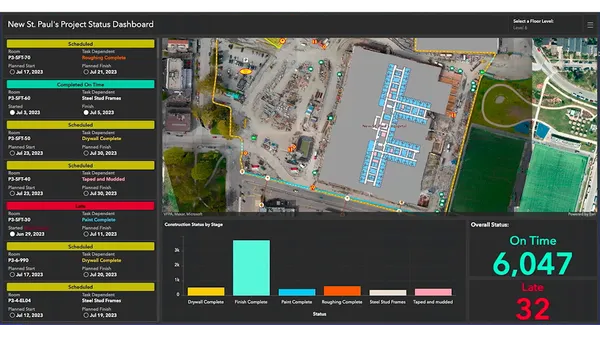Holograms of buildings that can be viewed via augmented reality headsets, drones that can be controlled from a joystick on a tablet and forklifts that can be operated from thousands of miles away are just a few of the innovations on Time magazine’s 200 Best Inventions of 2022 list that could help solve some of the biggest productivity obstacles facing the construction industry.
Time has been compiling lists of the year’s 100 best inventions for more than 20 years. This year, in a sign of how quickly tech is transforming many sectors, Time’s editors doubled that list for the first time ever. Though not every invention on the list is tech-related, many of the breakthrough innovations are powered by artificial intelligence, augmented reality and robotics — and a handful of them could prove revolutionary for the construction industry.
Here are six of the most construction-focused innovations that made the list.
Exodigo subsurface mapping platform
Exodigo’s “non-intrusive” platform lets construction crews see what’s underneath a site without the need for costly, time-consuming drilling and excavation and reducing the risk of redesigns. Exodigo’s platform applies artificial intelligence to data collected using sensors carried by small carts and drones to produce detailed 3D subsurface maps that reveal underground utilities and other subterranean surprises.
Magic Leap 2
No longer the domain of science fiction, holograms are entering the mainstream — and they could transform preconstruction. Contractors and designers can now beam up aligned, interactive holograms of large buildings using the Magic Leap 2, an augmented reality headset that runs customized enterprise solutions at scale. When powered by Argyle software, Magic Leap 2 provides one-click BIM updates for real-time site visualization and quality assurance.
Leica Geosystems’ BLK2FLY
Drones are proving invaluable for mapping jobsites, tracking progress and mitigating risk, but finding and hiring licensed operators is getting more and more difficult as demand grows. BLK2FLY, an autonomous flying laser scanner that can be controlled using virtual joysticks within an app so users don’t have to have a drone license or previous flying experience is changing the game. BLK2FLY can navigate around obstacles such as trees and wires to create 3D digital twins of building exteriors, structures and environments using radar sensors, cameras and GPS.
Reekon Tools T1 Tomahawk digital tape measure
The TI Tomahawk is the world’s first professional-grade digital tape measure, using precision front and rear reference surfaces and a green laser line projection to take incremental, center and internal measurements with the click of a button. Using Bluetooth connectivity, the T1 Tomahawk can synch and store measurements on the Reekon Rock app, where they can be compiled into cut lists, organized by location and shared with other users on the same site.
Phantom Auto remote operation platform for logistics
Forklift operators are vital to the global supply chain, and demand for them is soaring. That’s a huge headache for supervisors when pallets of building materials need to be transported on jobsites — until now. Phantom’s auto remote operation platform allows operators to remotely operate forklifts from anywhere in the world using high-resolution cameras, LIDAR sensors and graphic overlays to facilitate ultra-low latency video and sensor streaming.
ICON House Zero
From homes in Texas to buildings on the moon, ICON’s 3D printing technology is transforming construction. ICON’s Vulcan Construction System’s house-sized printer, a 9,500-pound robot powered by software that turns digital plans into physical buildings, can spit out a high-strength concrete wall system for a 2,400-square-foot home in 10 days. A community of 3D-printed House Zero homes is under construction in Georgetown, Texas, and ICON has contracted with NASA to develop a multipurpose construction system using building materials sourced from the moon and Mars.













